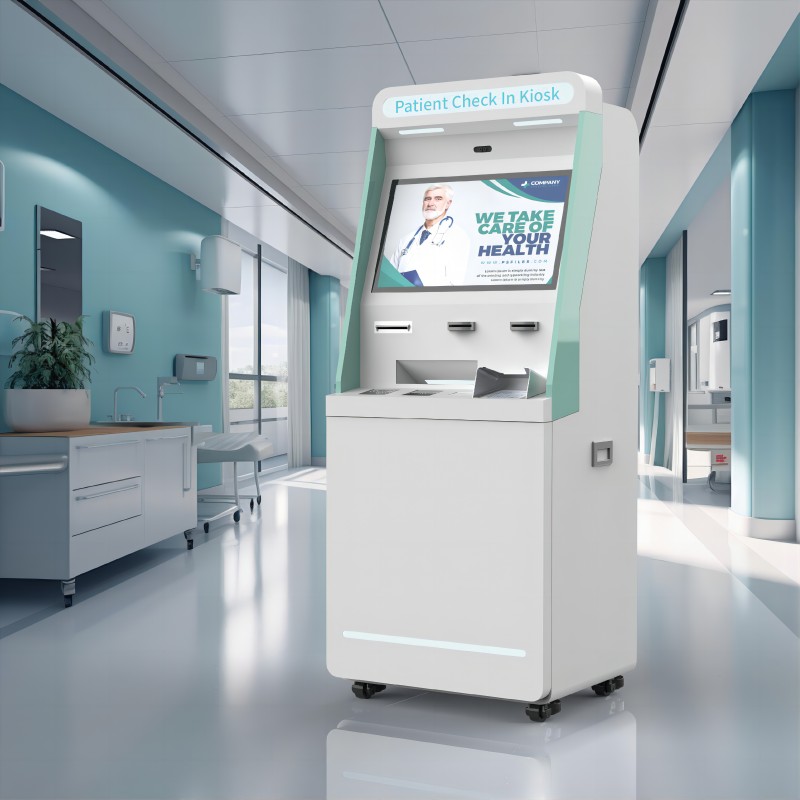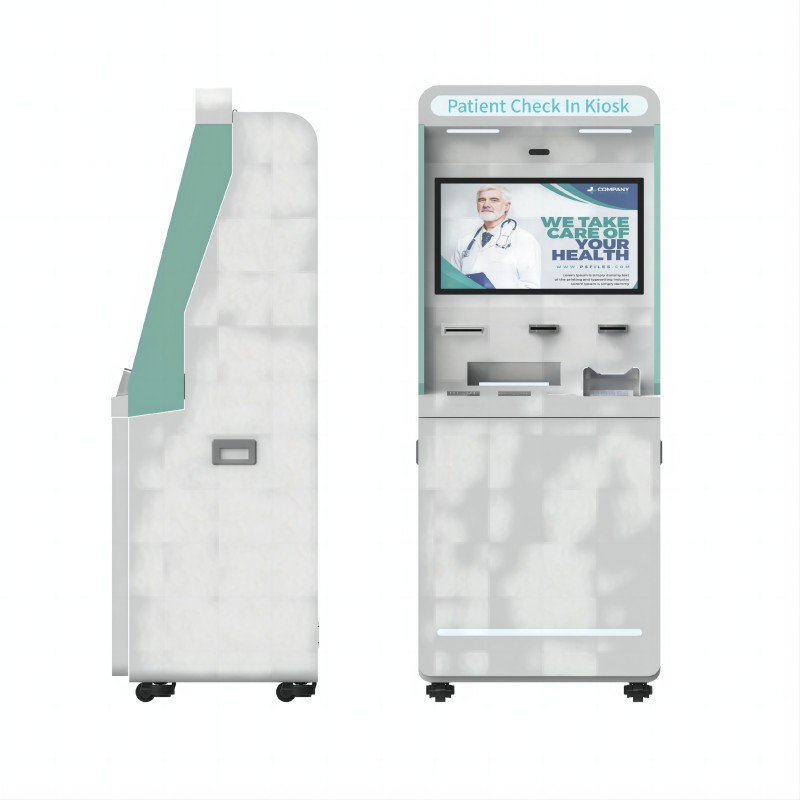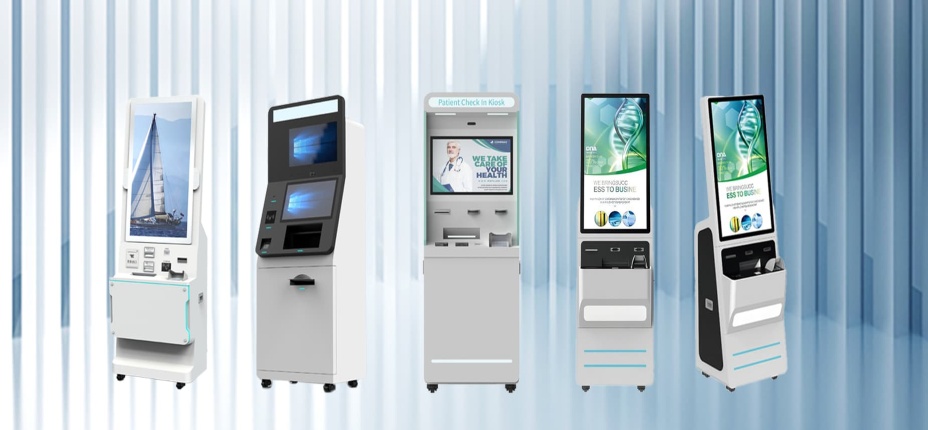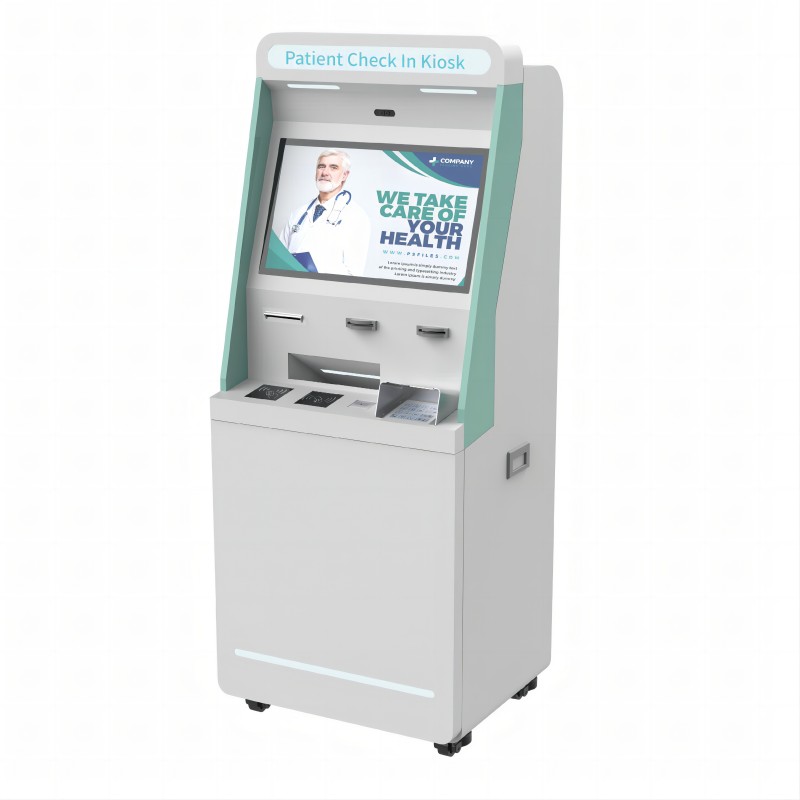





Introduction
In today’s fast-paced healthcare environment, efficiency and patient satisfaction are paramount. One innovative solution that has gained prominence is the Patient Check-In Kiosk. These self-service terminals are designed to streamline the check-in process, reduce wait times, and enhance the overall patient experience. This guide provides an in-depth look at Patient Check In Kiosks, exploring their features, benefits, technological components, best practices for implementation, and real-world applications.
Patient Check-In Kiosk is a self-service station used in healthcare facilities to streamline the check-in process for patients. It allows patients to register for appointments, verify their identity, update personal information, sign consent forms, and make payments. Equipped with features like touchscreens, card scanners, and biometric authentication, a Patient Check-In Kiosk enhances efficiency, reduces wait times, and minimizes the need for direct staff interaction, improving both patient experience and clinic workflow.
Patient Check-In Kiosks are equipped with several key features designed to improve the check-in process:
|  |
Implementing a Patient Check-In Kiosk offers several advantages:
Reduced Waiting Times: By allowing patients to check in themselves, a Patient Check-In Kiosk helps decrease long queues at the reception desk.
Enhanced Accuracy: Automated systems reduce the risk of human error in data entry, ensuring that patient information is accurate and up-to-date.
Increased Privacy: A Patient Check-In Kiosk provides a discreet way for patients to enter their information, thereby protecting their privacy.
Operational Efficiency: Streamlining the check-in process frees up staff to focus on other critical tasks, improving overall hospital efficiency.
The hardware components of a Patient Check-In Kiosk:
| Component | Description |
|---|---|
| Touchscreen Display | A high-resolution interactive display that allows patients to input information and navigate the check-in process using the Patient Check-In Kiosk. |
| ID/Card Scanner | Scans patient ID cards, insurance cards, or QR codes for identity verification and quick check-in at the Patient Check-In Kiosk. |
| Receipt Printer | Prints receipts, appointment confirmations, or other necessary documents after the patient completes the check-in process on the Patient Check-In Kiosk. |
| Payment Terminal | An optional component that allows patients to pay co-pays or outstanding balances directly at the Patient Check-In Kiosk. |
| Camera | Used for identity verification, capturing patient photos, or providing video support in certain Patient Check-In Kiosk systems. |
| Keyboard/Keypad | An alternative input method for patients who prefer using a physical keyboard rather than the touchscreen on the Patient Check-In Kiosk. |
| Speakers | Provide audio feedback or guidance to assist patients during the check-in process at the Patient Check-In Kiosk. |
| Biometric Reader | Captures fingerprints or uses facial recognition for secure and efficient identity verification at the Patient Check-In Kiosk. |
| RFID Reader | Reads RFID-enabled ID badges for fast and secure patient check-in at the Patient Check-In Kiosk in some hospitals. |
The software systems that power a Patient Check-In Kiosk
 | User Interface (UI) Design: The user interface of a Patient Check-In Kiosk must be intuitive and user-friendly, ensuring that patients can easily navigate through the check-in process. Appointment Scheduling Software: This system enables patients to manage appointments, reschedule, or cancel them directly from the Patient Check-In Kiosk. Electronic Health Record (EHR) Integration: The software seamlessly integrates with the hospital's EHR system, ensuring that patient data entered at the Patient Check-In Kiosk is securely stored and updated. Identity Verification Software: Utilizes various technologies, such as biometric scanning or QR code scanning, to verify the patient’s identity at the Patient Check-In Kiosk. Payment Processing System: Allows patients to handle payments for co-pays or outstanding balances directly through the Patient Check-In Kiosk. Multilingual Support Software: Provides language options to accommodate patients from diverse backgrounds using the Patient Check-In Kiosk. Security and Privacy Software: Ensures that patient information entered at the Patient Check-In Kiosk is encrypted and protected, complying with healthcare privacy regulations like HIPAA. |
When selecting a kiosk manufacturer for a Patient Check-In Kiosk, consider the following factors:
| Factor | Consideration |
|---|---|
| Reputation | Look for vendors with a proven track record in providing reliable and high-quality Patient Check-In Kiosks. |
| Technical Support | Ensure that the vendor offers comprehensive technical support and maintenance services. |
| Customization | Choose a vendor that provides customization options to meet the specific needs of your hospital. |
| Cost | Evaluate the cost of the Patient Check-In Kiosks, including any additional fees for software, installation, and support. |
Integrating and deploying a Patient Check-In Kiosk involves several steps:
Assessment of Existing Systems: Ensure that the Patient Check-In Kiosk is compatible with your hospital’s existing systems.
Deployment Plan: Develop a detailed plan for installing and configuring the Patient Check-In Kiosks, including timelines and resource allocation.
Testing: Conduct thorough testing to ensure that the kiosks function correctly and integrate seamlessly with existing systems.
Effective user training and support are essential for the successful implementation of Patient Check In Kiosk:
Training Programs: Provide comprehensive training for hospital staff to ensure they can assist patients with using the Patient Check-In Kiosk.
Ongoing Support: Establish a support system for addressing any issues or questions that arise after the Patient Check-In Kiosk is installed.

Here are a few examples of how Patient Check-In Kiosks have positively impacted hospitals:
| Hospital | Location | Implementation | Outcomes |
|---|---|---|---|
| City Hospital | New York, USA | Full deployment | Reduced patient wait times by 30%, increased patient satisfaction scores by 25%. |
| Greenfield Clinic | London, UK | Partial deployment | Streamlined the check-in process, leading to a 20% increase in appointment efficiency. |
| Sunnydale Health Center | Sydney, Australia | Full deployment | Improved data accuracy and reduced administrative workload by 40%. |
Integration with AI and Machine Learning: Future Patient Check-In Kiosks will likely incorporate AI to provide personalized assistance, automate check-in processes, and utilize predictive analytics for better patient flow management.
Enhanced Security Features: With ongoing advancements in data protection, future Patient Check-In Kiosks will focus on improving encryption, multi-factor authentication, and compliance with healthcare privacy regulations like HIPAA.
Increased Mobility: Future innovations may enable mobile check-in options, allowing patients to complete their check-in remotely via their smartphones through integrated Patient Check-In Kiosk platforms.
Touchless Interaction: As touchless technology evolves, Patient Check-In Kiosks may adopt features like voice recognition, facial scanning, and gesture control, providing a more hygienic and convenient experience.
Telemedicine Integration: With the growth of telehealth services, Patient Check-In Kiosks may be used to facilitate virtual consultations and streamline patient registration for both in-person and remote appointments.
Customizable User Interfaces: Future Patient Check-In Kiosks will offer more customizable interfaces, adapting to patient preferences, language needs, and accessibility requirements, enhancing overall usability and satisfaction.

Patient Check-In Kiosks represent a significant advancement in healthcare technology, offering numerous benefits for both patients and healthcare providers. By reducing wait times, enhancing data accuracy, and improving overall operational efficiency, these kiosks play a crucial role in modernizing hospital check-in processes. As technology continues to evolve, Patient Check-In Kiosks will likely become even more integral to providing a streamlined and patient-centric healthcare experience.
A Patient Check-In Kiosk is a self-service terminal that allows patients to check in for their appointments, update their information, and manage appointments without having to wait in line at the reception desk.
It reduces wait times, increases the accuracy of patient data, enhances privacy, and allows hospital staff to focus on more complex tasks.
Consider the vendor’s reputation, technical support, customization options, and overall cost.
A Patient Check-In Kiosk is a self-service terminal that streamlines the check-in process by allowing patients to register, verify their identity, and handle payments. It improves efficiency, reduces wait times, and frees up staff for more critical tasks.
Patient Check-In Kiosks use advanced encryption and secure software to ensure compliance with healthcare privacy standards like HIPAA, protecting all personal and medical data entered.
Yes, these kiosks can integrate seamlessly with hospital systems such as Electronic Health Records (EHR) and appointment scheduling software, allowing for real-time updates and smooth data flow.
The kiosk offers faster check-in, reduces long wait times, and provides a user-friendly interface with multilingual options, making the process smoother and more convenient for all patients.
The Patient Check-In Kiosk supports multiple payment methods, including credit cards, debit cards, and contactless payments, enabling patients to settle co-pays or outstanding balances efficiently.
How Self-Check-In Kiosks Shape Access to Care and Efficiency of Hospital Services
Address: No. 99-15, Fuan intelligent manufacturing Industrial Park, Dayang Road, Fuhai Street, Baoan District, Shenzhen, China